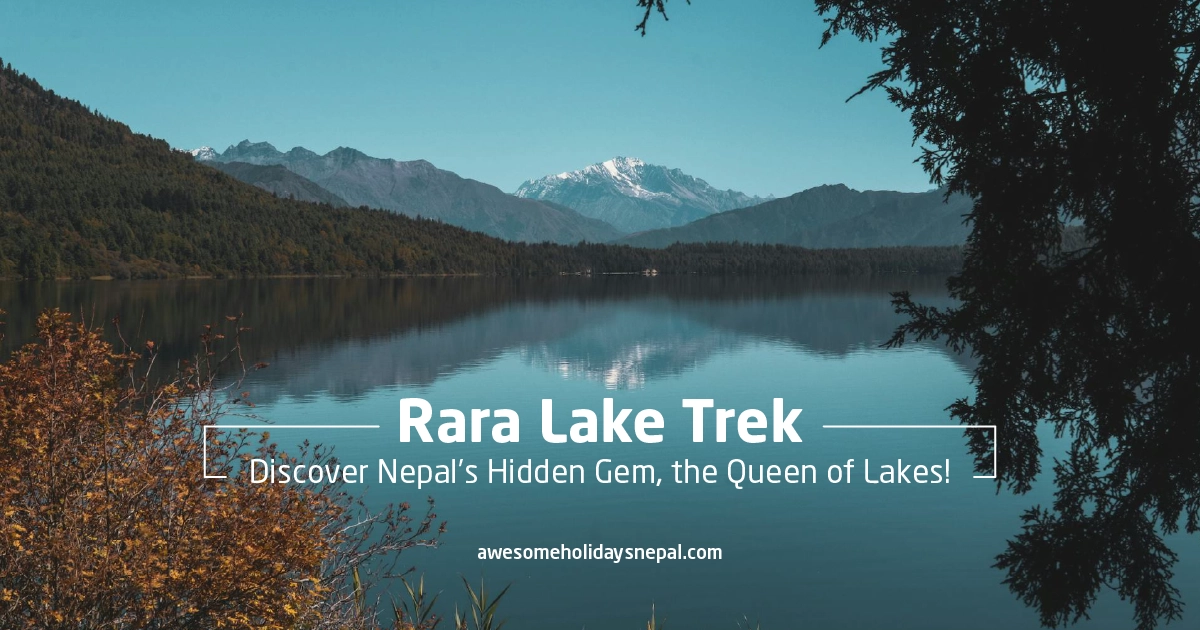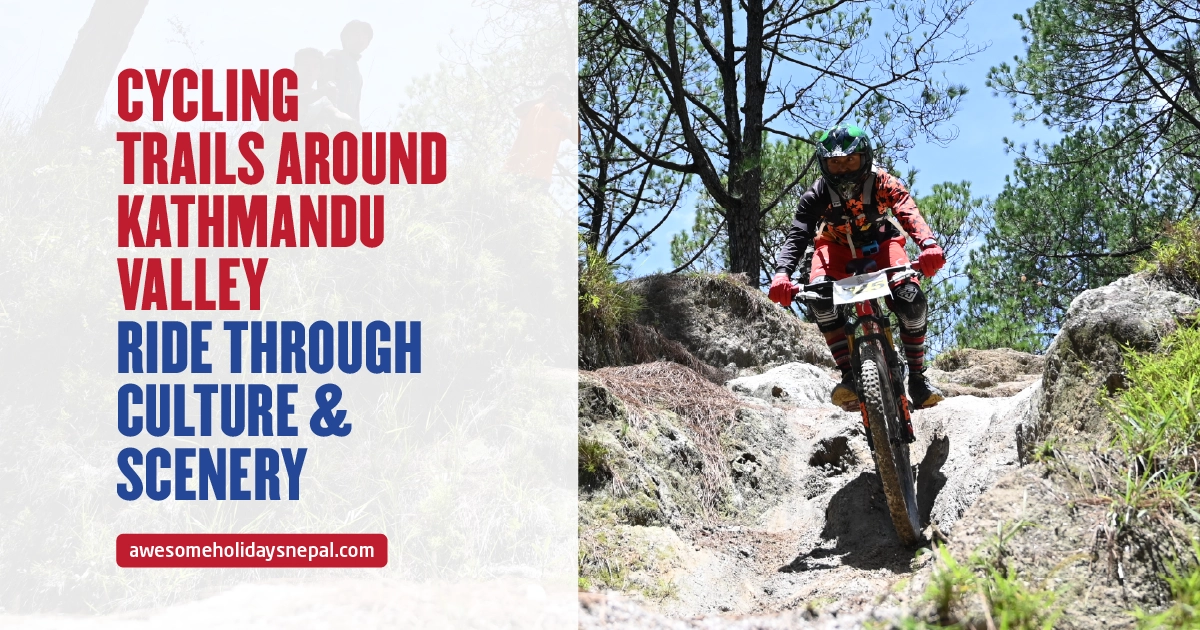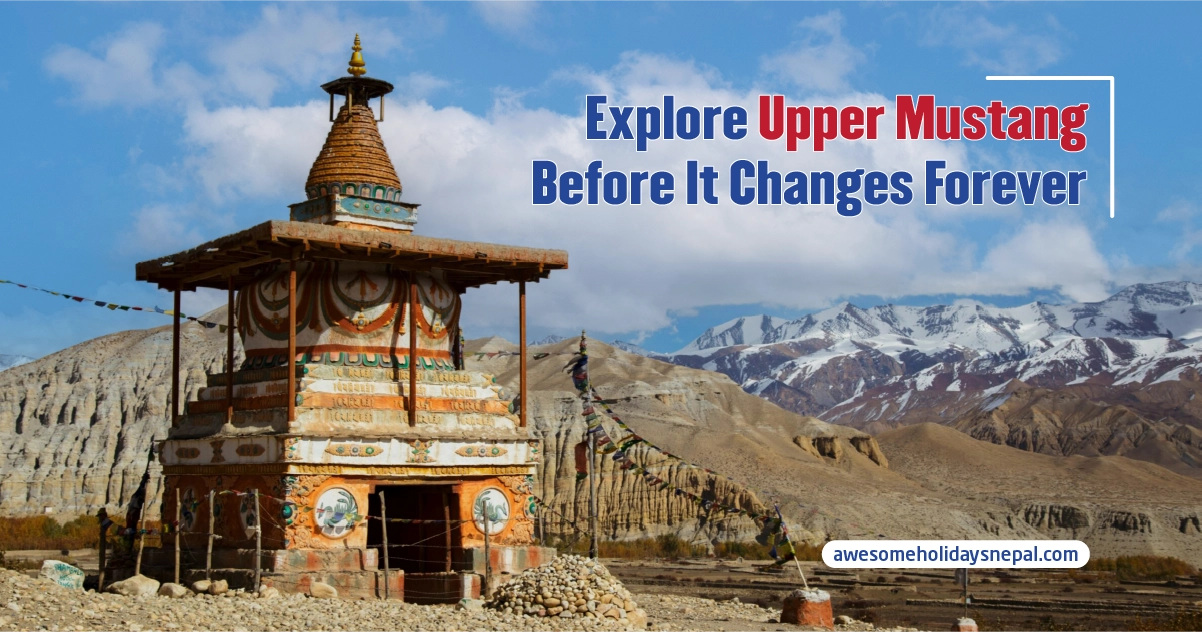Sagarmatha National Park: A UNESCO World Heritage Site
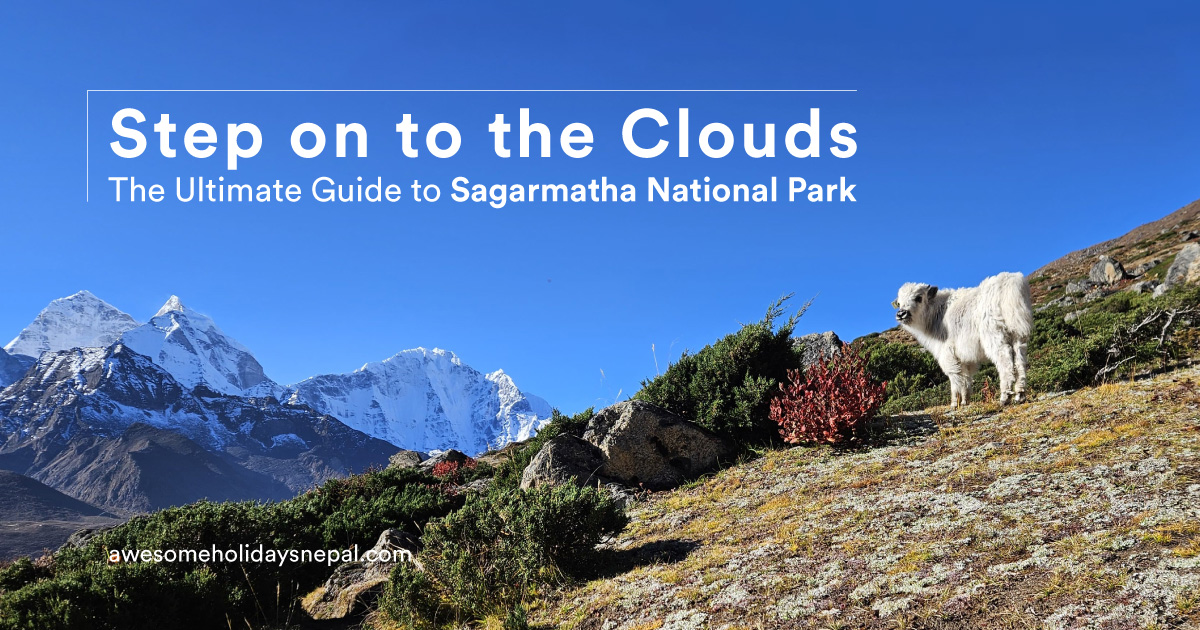
Sagarmatha National Park is home to Mount Everest (Sagarmatha), the world’s highest summit. It is also a storehouse of biodiversity, cultural heritage, and natural beauty.
The national park, situated in the Khumbu region of Nepal, covers an area of 1,148 square kilometers and was designated a UNESCO World Heritage Site in 1979 A.D. It attracts thousands of nature lovers, climbers, and trekkers.
Visitors witness diverse wildlife, breathtaking landscapes, and an immersive cultural experience with the locals. So, let’s dive deep and learn everything about Sagarmatha National Park. Oh, and if you want to know about UNESCO World Heritage Sites in Nepal, read our blog.
Sagarmatha National Park Overview
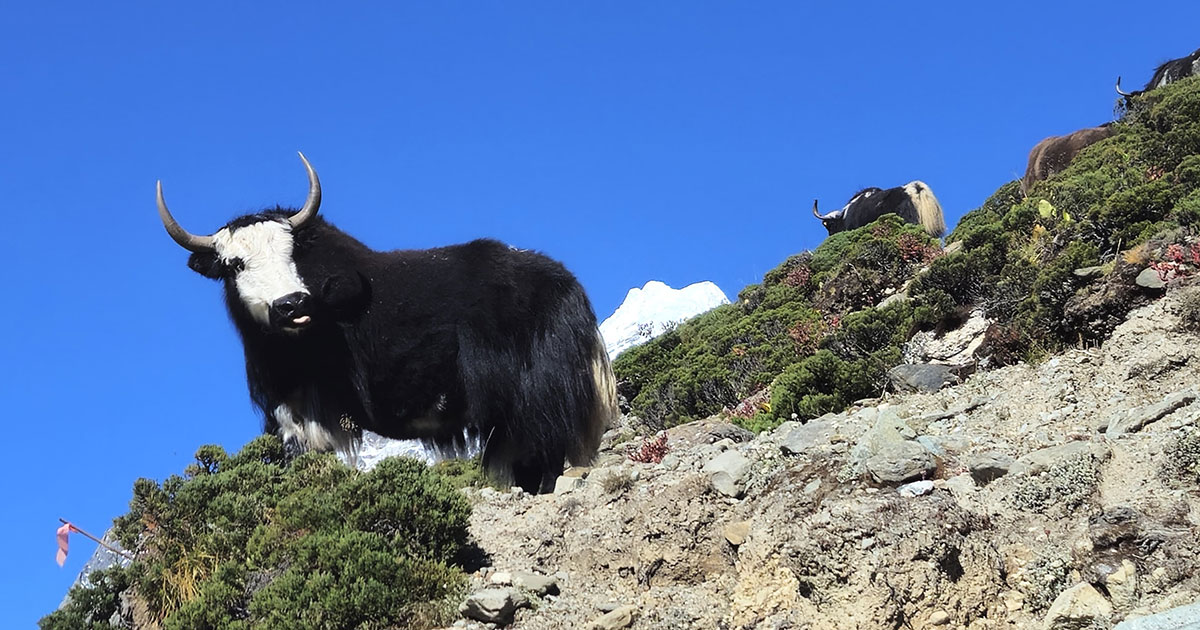
Sagarmatha National Park was established back on July 19, 1976, A.D. It covers an expansive area of 1,148 square kilometers. It is home to Mount Everest, glaciers, deep valleys, and picturesque trails. The national park is not just about landscapes but also holds historical, cultural, and ecological significance.
Sagarmatha (Mount Everest)
Sagarmatha, officially named by the famous historian Baburam Acharya, comes from two Nepali words: “Sagar,” meaning sky, and “Matha,” meaning head, which together represent “the head in the great blue sky.” Chomolungma is the local Tibetan name for Mount Everest, meaning “Goddess Mother of the World.”
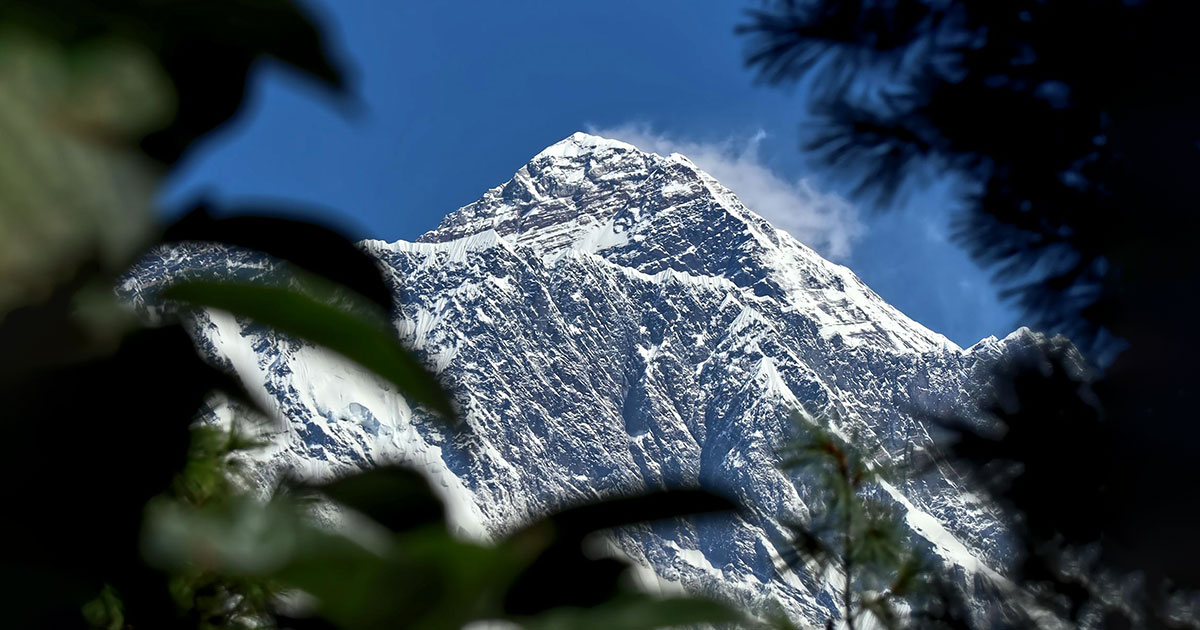
At an elevation of 8,848.86 meters above sea level, Mount Everest rises. Everest has seen many records set by climbers over the years, including the quickest ascent, the youngest and oldest climbers, and oxygen-free ascents. Sir Edmund Hillary and Tenzing Norgay Sherpa completed the first successful climb in 1953. Hillary later assisted in the creation of Lukla Airport, today called Tenzing-Hillary Airport and one of the most hazardous airports on earth. This airport, situated 2,846 meters high, has opened up Everest trekking somewhat.
Major Highlights of Sagarmatha National Park
- You get to witness Mount Everest, the world’s highest summit.
- Sagarmatha National Park is the highest-altitude national park in the world.
- You see rare flora and fauna as it has rich biodiversity.
- It is a UNESCO World Heritage Site.
- It is a culturally significant region with deep-rooted Sherpa traditions.
- A thrilling destination for trekkers, mountaineers, and adventure seekers.
- Get to have a close-up experience of breathtaking landscapes, glaciers, and high-altitude lakes.
Geography and Landscape
The Sagarmatha National Park is defined by Rugged terrain, deep valleys, and soaring heights such as Everest (8,848m), Lhotse (8,516m), Nuptse (7,861m), Ama Dablam (6,812m), and Thamserku (6,623m). Flowing through the park from the Khumbu Glacier, the Dudh Koshi River offers sustenance and life support to the area.
Cultural and Local Influence
The local communities of the Khumbu region have a rich and unique culture that has mesmerized visitors for decades. The Sherpa people, known for their endurance and mountaineering skills, are the primary inhabitants of this region.
Their warm hospitality, traditions, music, food, and festivals add charm to the national park. Visitors are often inspired by the harmony, love, and respect the Sherpa people share within their communities and with nature. Their deep spiritual connection with the mountains makes this region even more fascinating.
Biodiversity of Sagarmatha National Park
Sagarmatha National Park is an ecological treasure trove, home to diverse flora and fauna. It has a buffer zone of 275 square kilometers, helping in the conservation of rare species that thrive in cold, high-altitude environments.
Flora
Comprising several thousand plant species, the park has subalpine woods. Between 4,000 and 5,000 meters in elevation, customary species include Himalayan birch, fir, rhododendron, and juniper.
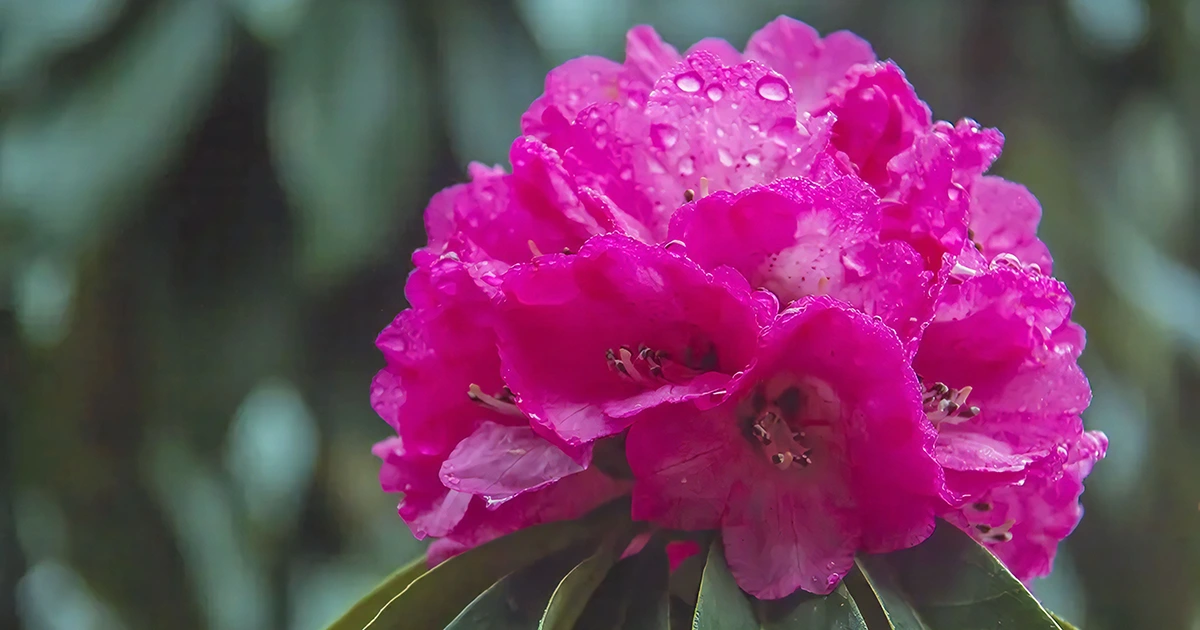
Vegetation at high altitudes is composed of lichens and mosses that have evolved to tolerate harsh temperatures.
Fauna
Including the Impeyan pheasant (Nepal’s national bird), snowcocks, bearded vultures, and alpine choughs, Sagarmatha National Park provides habitats for approximately 208 bird species.
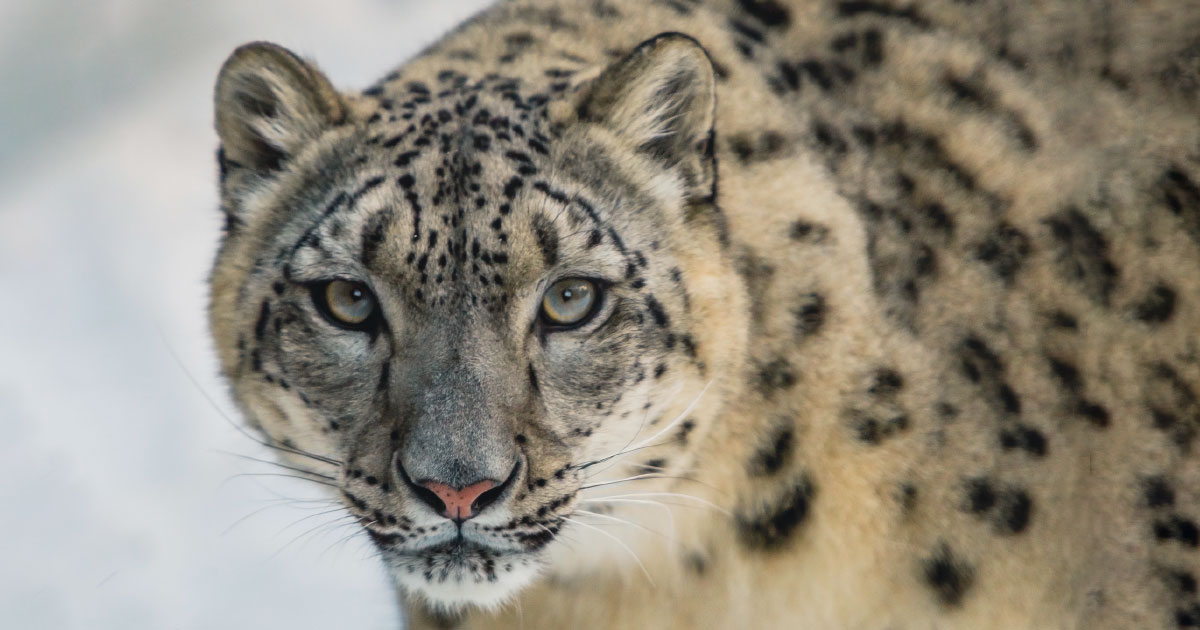
Furthermore, there are uncommon or threatened species including the Red Panda, Wild Yak, Musk Deer, Himalayan Tahr, Tibetan Wolf, Snow Leopard, and Himalayan Black Bear.
How to Reach Sagarmatha National Park
By Air
You can reach Sagarmatha National Park just by taking a 25-minute flight from Kathmandu to Lukla.
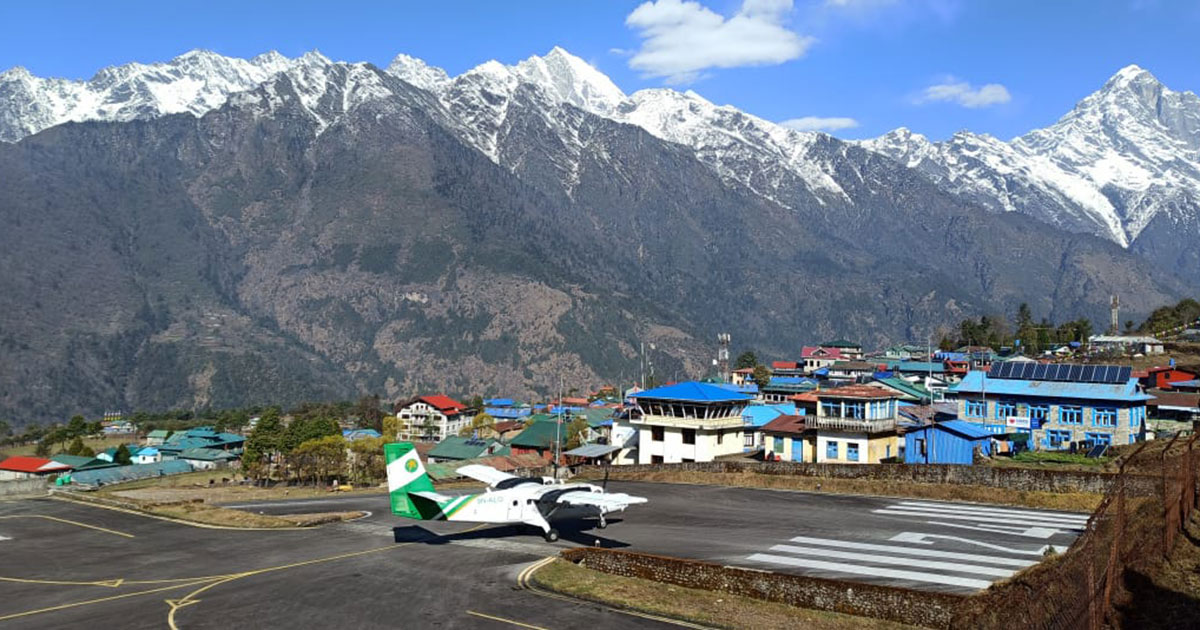
It is further followed by a two-day trek to the park’s entrance. Oh, it is also the fastest way to reach the national park.
By Road
Although there are no direct roads to Sagarmatha National Park, you can get to the national park via two main routes. You need to take a bus ride from Kathmandu to Jiri. After a strenuous 10-day journey through picturesque towns and rocky paths, you approach the park.
Another option is to take a bus ride from Kathmandu to Salleri, which will shorten the trek to roughly five days. Compared to the well-liked Lukla flight, both routes offer a more immersive experience that enables hikers to gradually adjust to the altitude.
Climate and Best Time to Visit
The park’s high-altitude location makes it cold throughout the year. However, different seasons bring varied experiences.
Because of the high altitude of its position, Sagarmatha National Park has cold temperatures all year round. Still, every season presents guests with a distinct experience. Winter, which lasts from December to February, is the most frigid month of the year, with temperatures bottoming out at -17°C. Although the severe cold, fierce winds, and heavy snowfalls make hiking hard, visitors during this period can enjoy quiet paths and magnificent, snow-covered scenery.
March to May—spring—is widely regarded among the most excellent times of year to go to the park. Daytime highs reach around 7°C, and nighttime lows are -12°C, but the climate is still mild and comfortable. The vibrant colors of rhododendron forests add to the allure of the trails clear blue skies offer glorious vistas of the Himalayas.
From June to August, the summer season brings the monsoon, which raises the daytime temperatures up to 16°C. Though the trails may be muddy and hard given the regular rains, the natural mountain air and plant life give a different sort of beauty. Less people are around this year, so this is perfect for anyone desiring solitude in nature.
From September to November, autumn presents another ideal opportunity to see Sagarmatha National Park. Many hikers are drawn this season by constant weather, clear skies, and moderate 0° to 10°C temperatures. Autumn is among the most sought-after periods for adventure seekers thanks to the fresh mountain air, golden-hued landscapes, and sweeping vistas of Everest and neighboring peaks.
Things to Do in Sagarmatha National Park
Sagarmatha National Park is an adventure haven, offering several thrilling activities:
- Go on an Everest Base Camp Trek
- Explore Dudh Koshi River
- Hike to Kalapathar for panoramic views of Everest
- Visit Gyoko Lake for scenic camping
- Visit the Tengboche monastery
- Witness Himalayas on a Helicopter tours
Important Landmarks in Sagarmatha National Park
- Everest Base Camp – A dream destination for trekkers worldwide.
- Kalapathar – The best viewpoint to see Everest up close.
- Gyoko Lake – A stunning high-altitude glacial lake.
- Khumbu Glacier – The highest glacier in the world.
- Namche Bazaar – The gateway to Everest and a cultural hub.
Entry Permits and Fees
You need to get a permit to enter Sagarmatha National Park. These permits can be obtained at the entry gate in Monjo or the Nepal Tourism Board Office in Kathmandu Valley. Below we have listed the cost of permit for different nationals:
- Foreigners: Rs.3,000
- SAARC Nationals: Rs.1,500
- Nepalese: Rs. 25
- Children (below ten years): Free
Culture and Lifestyle of Sherpa People
Sherpa people follow Tibetan Buddhism and have great reverence for mountains and nature. Traditional dances and rites honor special occasions such as Gyalpo Losar (New Year), Mani Rimdu, and Dumje. Tibetan culture has had an impact on their dishes, which includes tsampa, momo, Tibetan bread, salty butter tea, and potato pancakes. For women, married or not, Sherpa dress features kitycow (robes) for men and bakhu, for men and women married or not.
Accommodation Options
There are various hotels, lodges, and tea houses providing comfortable stays, including Panorama Lodge and Restaurant, Lama Hotel, and Lukla Airport Restro.
Travel Tips
- Be physically prepared for high-altitude trekking.
- Show respect to the local culture and people.
- Listen to your guide’s advice and carry necessary medications.
- Stay hydrated and wear proper trekking gear.
- Be mindful of altitude sickness symptoms and act accordingly.
Sagarmatha National Park is a true natural and cultural wonder, offering an experience of a lifetime!
Natural Haven of the Himalayas
Sagarmatha National Park is a haven for all nature enthusiasts, adventure lovers, and culture seekers. So, here in this article we have tried our best to describe everything about the Sagarmatha National Park. So, if you are thinking about coming to Nepal, it is one of the must-visit destinations.
The Sagarmatha National park offers everything, be it natural beauty, thrill, or spiritual peace.
So, hurry up and lace your boots. Visit this gorgeous National Park.
Related blog posts
Discover a choice of tourist destinations loved by most of our visitors. Whether you're on a jungle safari to spot rare animals or walking through a world heritage site, these well-planned itineraries cover the major highlights of Nepal.


